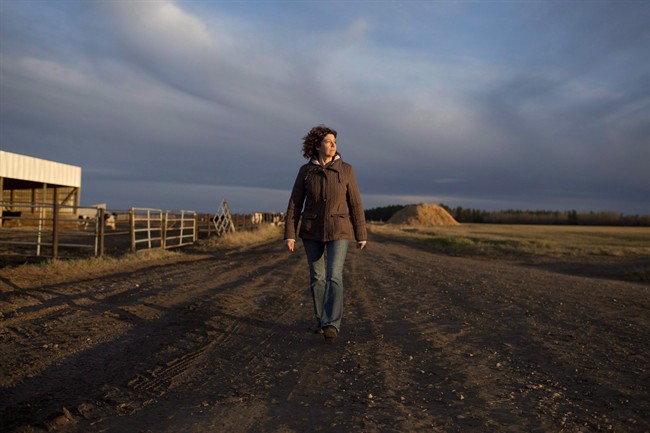CALGARY – A new report says the average price of farmland across Canada increased 10.1 per cent last year as low interest rates and strong crop income helped maintain demand.

The report by Farm Credit Canada says last year’s gains are part of a continuous upward trend that started in 1993.
The gains, however, are lower than in recent years, with the average price increasing 14.3 per cent in 2014 and 22.1 per cent in 2013.
The chief agricultural economist at Farm Credit Canada says farmers have to prepare for a potential softening of the market as lower crop prices have already increased volatility.
J.P. Gervais says farmers didn’t feel the full effects of lower commodity prices last year because of the significant drop in the Canadian dollar.
But looking ahead, Gervais says 2016 could see more modest farmland value gains of two to four per cent as farmer income, known as crop receipts, start to be affected.
“The reason that we’re seeing that rate of increase slow down is that it matches the fact that we’re approaching the top of the cycle when it comes to receipts,” said Gervais.
He said some areas of the country are already seeing farmland prices affected, with some significant variations in price trends within each province.
Gervais said that roughly half of Saskatchewan farmland saw little price increase or even a slight decrease last year. The Saskatchewan government has introduced stricter measures dictating who can own farmland in the province in an effort to ensure it remains accessible to the province’s farmers and ranchers.
- Posters promoting ‘Steal From Loblaws Day’ are circulating. How did we get here?
- Canadian food banks are on the brink: ‘This is not a sustainable situation’
- Is home ownership only for the rich now? 80% say yes in new poll
- Investing tax refunds is low priority for Canadians amid high cost of living: poll
Roughly 40 per cent of Ontario farmland also experienced scant price increases, or some decreases, last year. But overall, Saskatchewan’s rate of price growth slowed to 9.4 per cent, down from 18.7 per cent the year before, and Ontario saw a 6.6 per cent increase, down from 12.4 per cent in 2014.
And on a weighted average, all provinces saw increases, with Manitoba having the highest average gains at 12.4 per cent. New Brunswick’s increases were the lowest at 4.6 per cent.
British Columbia saw prices increase 6.5 per cent, up from 4.2 per cent in 2014, and Alberta saw a hike of 11.6 per cent compared with 8.8 per cent the year before.
Despite more than two decades of climbing prices, Gervais says he doesn’t see a bubble in farmland values, since the ratio between crop receipts and farmland values isn’t very far removed from what it’s been for the past 50 or 60 years.
“What this suggests to me is given where the receipts, given where interest rates are, farmland valuations rest on sound economics,” said Gervais.
He said any increase in interest rates or a strengthening Canadian dollar would likely have a negative effect on farmland prices.

Comments